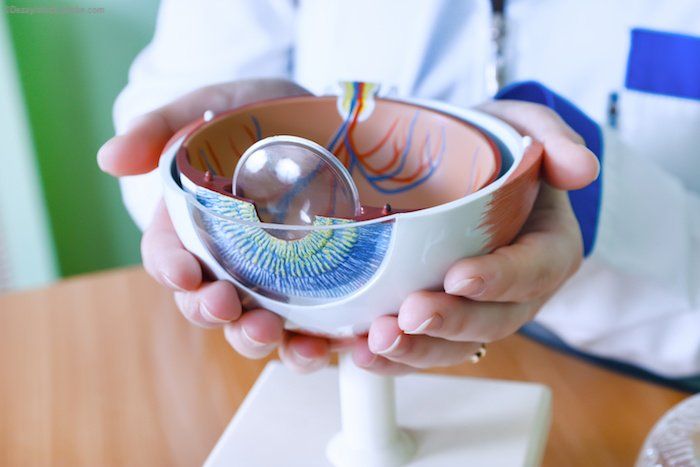Article
Current trends, challenges in glaucoma
Author(s):
Glaucoma specialists deal with numerous routine considerations on a daily basis. Andrew Iwach, MD, enumerated some of these consideration and discussed the bright spots and the pitfalls.

Glaucoma specialists deal with numerous routine considerations on a daily basis. Andrew Iwach, MD, enumerated some of these consideration and discussed the bright spots and the pitfalls.
Dr. Iwach is executive director, Glaucoma Center of San Francisco; associate clinical professor of ophthalmology, University of California San Francisco; co-chairman of Glaucoma 360; and chairman of the Glaucoma Symposium.
Disinfection of the applanation tonometer tip
The possibilities for this task include the use of alcohol, bleach, or disposable tips.
This has become a discussion topic because of a 2017 publication that concluded that sodium hydrochloride-diluted bleach disinfection is effective. However, some small adenoviruses remain refractory to the disinfection with later transmission possible.
Another complication is that extended exposure to bleach can cause the breakdown of the tip with potential for infection by other pathogens. The article precipitated a discussion of the pros and cons of the various disinfection approaches that included a protocol for use of bleach: wipe the reusable tonometer tip, soak in 10% bleach for 5 minutes, rinse with water and allow it to dry, check for cracks at each use using 16 times magnification.
A subsequent discussion touted the use of disposable tips, thus eliminating the need for bleach and alcohol, according to Dr. Iwach.
In actuality, “there is a global transmission risk in our offices, which includes the to-nometry tip, but other factors are present,” he noted. These include many surfaces in offices. Moving from alcohol to bleach may introduce other different factors.
Dr. Iwach pointed out that major outbreaks have not occurred to this point because of global risk management.
“We already are taking steps well beyond just addressing cleaning the tonometry tip,” he said. Dr. Iwach suggested that physicians include a statement in their office manuals that states that the practice has addressed risk management, and that alcohol, if used, has worked.
Checking tonometric calibration
Calibration of the tonometer should be performed periodically. Dr. Iwach said tonometers come with a device that can be inserted into a slot on the instrument that determines if the instrument is calibrated.
YouTube has instructive videos to teach the clinical staff about the calibration process.
The safest approach is to send the tonometer back to the manufacturer for calibration.
Therapeutics
Prostaglandins are the most prescribed drugs for glaucoma in the United States, but this trend has declined slightly in recent years.
Prescription of beta-blockers and some combination drugs are on the rise.
“This is an interesting, subtle change in prescribing trends,” Dr. Iwach suggested, and he even questioned if cost is a factor.
Misleading advertising
Dr. Iwach cited the example of latanoprost described by the manufacturer as benzalkonium chloride (BAK)-free, suggesting that the drug was pre-servative-free. The drug actually contained the preservative potassium sorbate that caused more irritation than BAK.
Dr. Iwach added that use of this BAK-free drug may have a role in patients being aller-gic to BAK. He advised physicians to read the accompanying literature carefully.
Surgical trends
Medicare data have shown that trabeculoplasty remains one of the most commonly performed procedures and that the frequency with which trabeculectomy is performed is trending down possibly because of the introductions of latano-prost and selective laser trabeculoplasty, Dr. Iwach noted.
Other noteworthy trends are an increase in the use of the iStent Micro-Stent (Glaukos) procedures, a decrease in endolaser cyclophotocoagulation treatments, and increas-es in transscleral cyclophotocoagulation treatments and goniotomy. A hybrid, valve-less glaucoma drainage device (New World Medical) is new device.
The placement openings in this model are more anterior to ease dissection, and a su-ture is pre-placed in the tube. The device is available in two sizes.
A new automated, non-contact laser system, the Belkin Laser, developed by Michael Belkin, MD, in Israel, has been reported to apply about 100 spots in the eye in 1 sec-ond. About eight cases have been reported to have had significant decreases in intra-ocular pressure.
“This may be a game-changer in the first treatment of patients,” Dr. Iwach said.
This laser is not yet approved in the United States.
Risks of glaucoma innovations
Development of new technologies can introduce “in-ventor bias” into the evaluation of a device or procedure.
However, Dr. Iwach said complexities versus complications must be considered.
“Physicians should have a good sense of what they are getting into,” Dr. Iwach said. “Sometimes, things go wrong.”
With new procedures, physicians should consider if they would readily undergo the procedure themselves or suggest that a family member do so.
One such scenario that Dr. Iwach cited was the CyPass Micro-Stent (Alcon Laboratories) recall. The device was considered to be highly innovative, but ultimately was associated with significant corneal endothelial cell loss.
“When considering new procedures, use them while they still work and no complica-tions have been reported,” he added.




